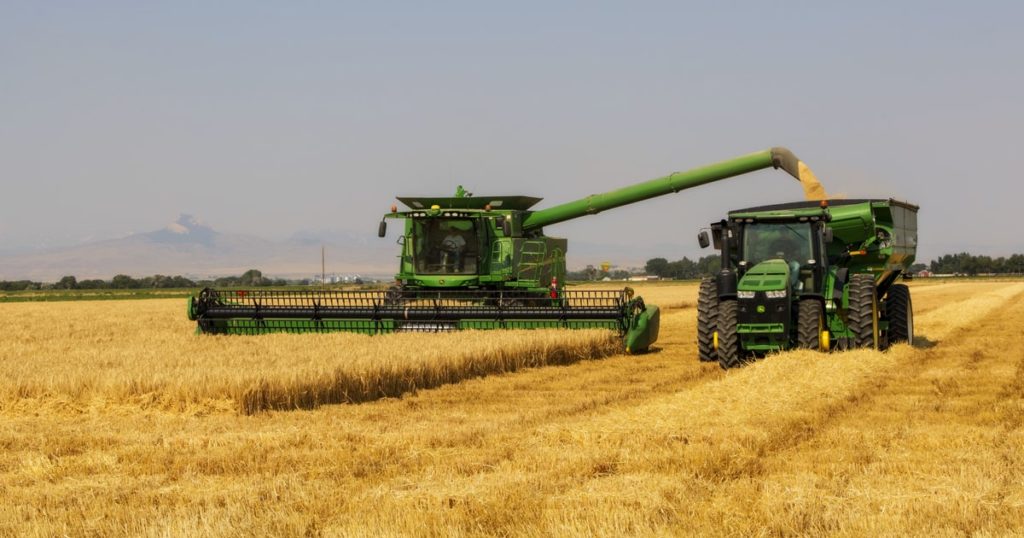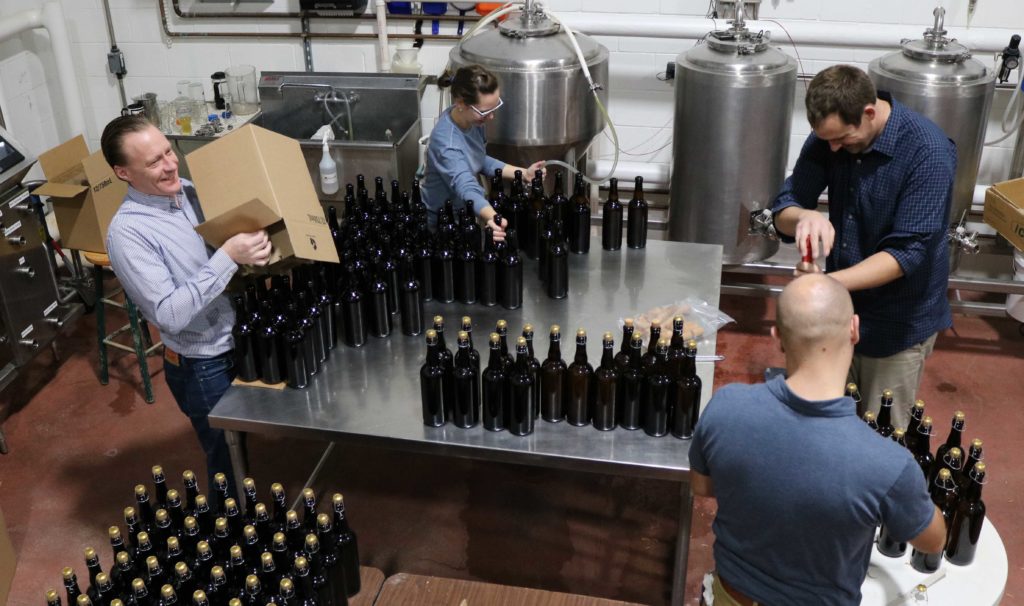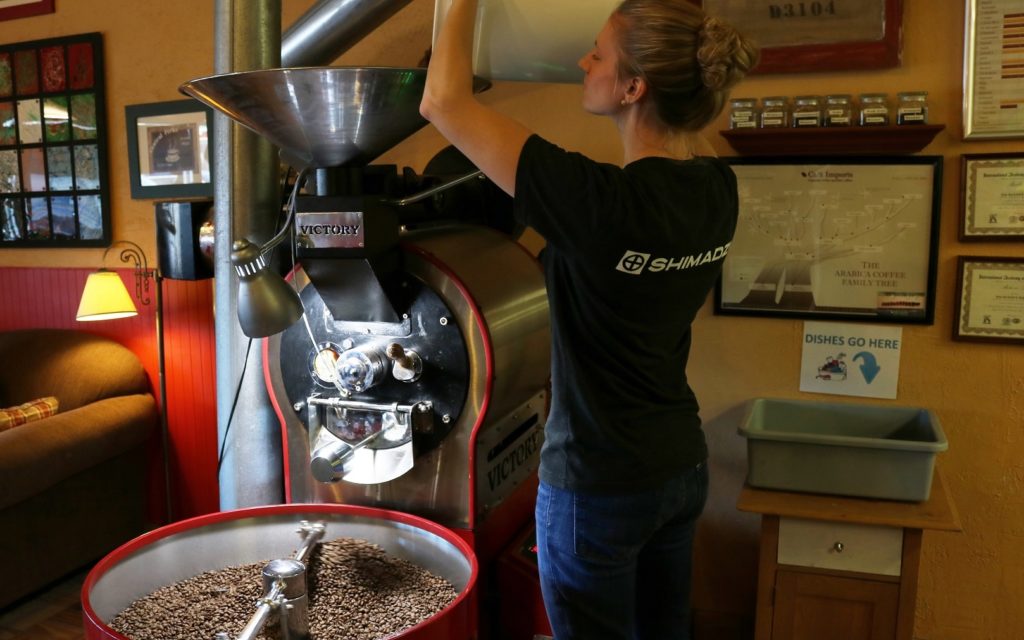
Over the past six months, I have enjoyed the unique opportunity to explore the intriguing worlds of malt and coffee roasting. Briess offers the most diverse range of specialty malt products in North America, but one thing we do not offer is roasted coffee beans. Then why, you might ask, would I spend time learning to roast coffee? The interesting truth is, roasting is where the worlds of coffee and malt collide; learning to roast one raw material can teach you quite a bit about roasting the other.
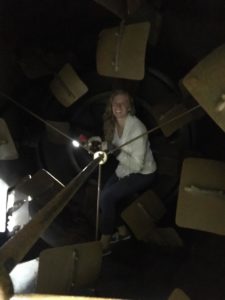
Earlier this year, I became fascinated by the diversity that roasting offers to malt flavor creation. I envisioned myself learning to operate our roasters and understanding how to masterfully manipulate process variables to create unique malt flavors. I shared this idea with my manager, Bob Hansen, who responded simply by asking me if I was free to go on a field trip for the rest of the day. Bob brought me to Chilton’s local organic coffee shop, Terra Verde. I assumed we were stopping by to pick up a quick drink on our way to drive somewhere else. When we walked in the door, I saw the reason we had come. A beautifully maintained, 12-kg coffee roaster operated peacefully in the room while folks sipped their hot drinks and conversed about the day.
Bob introduced me to Marko Sosa, Owner and Roaster at Terra Verde. We discussed my interest in learning as much as I could about the roasting process and Marko generously offered to teach me. I could tell this was going to be the beginning of something big.
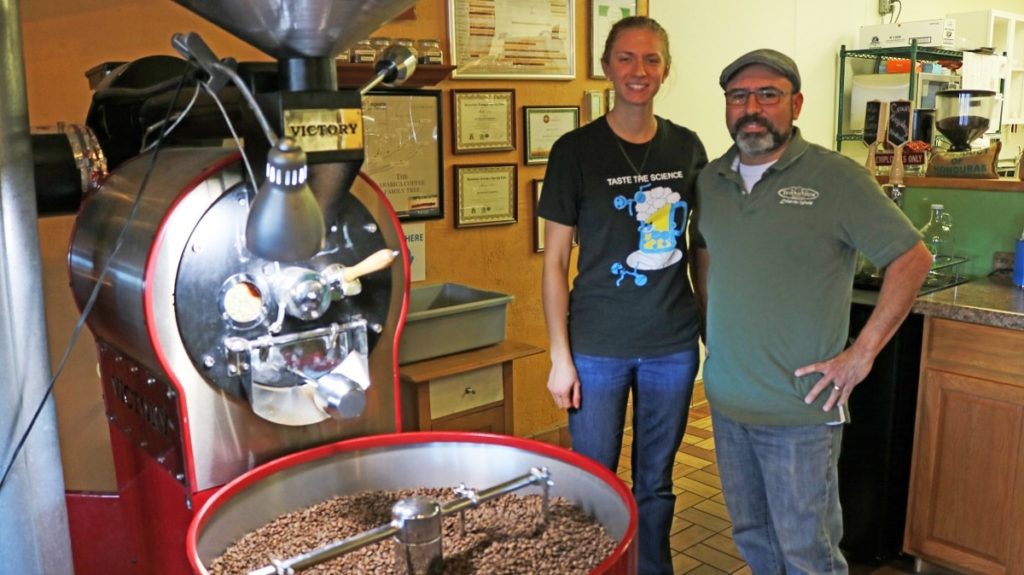
A week or so later, Marko took me under his wing and showed me how to operate his roaster. Together, we profiled a roasting recipe, which is the process of recording the time and temperature relationship throughout the roasting process and marking when key events like the first crack (water inside bean vaporizes and causes the bean to expand, crack, and double in size), second crack (cellulose in the cell wall of the bean breaks apart), and distinguishing aroma changes take place. We pulled samples regularly towards the end of the roasting program, which Marko then used to teach me how to cup. Cupping is to coffee as Hot Steep is to malt; it is the coffee industry’s standard method of preparing a coffee sample for sensory evaluation.
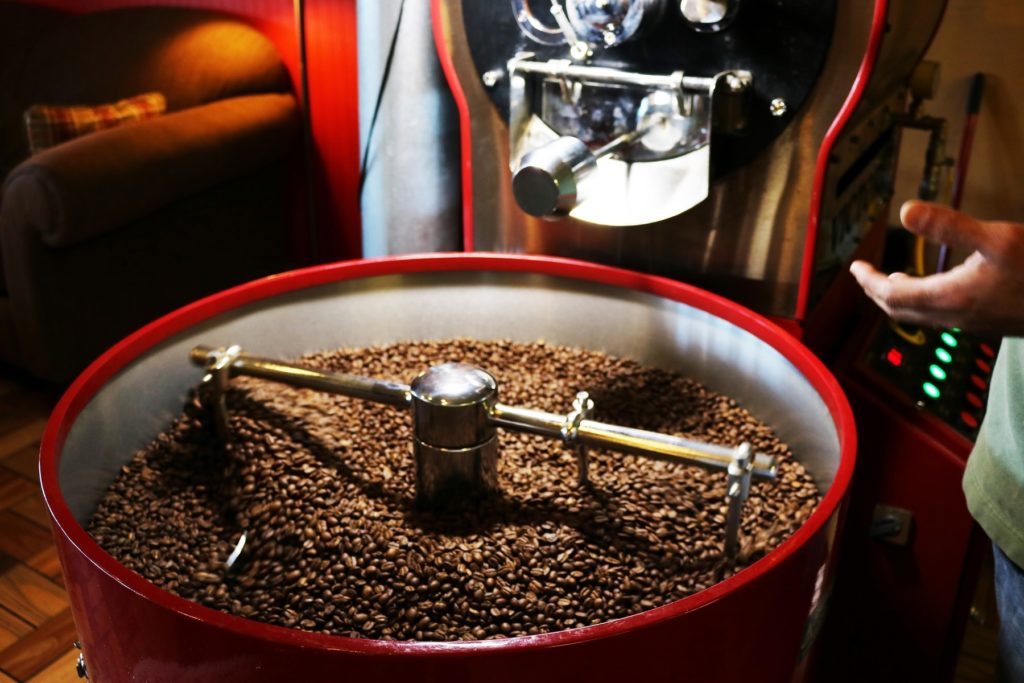
Over the summer, I attended the Mill City Roasters Basic Commercial Coffee Roasting course, where I learned about topics that ranged from basic roaster operation, safety and maintenance to greens selection to roast theory and profile planning. I also gained hands-on experience in coffee roasting and sensory evaluation through cupping. All this exposure taught me to appreciate the craft of coffee roasting and the nuances of flavor creation. Quickly I transformed from someone that never drank coffee (or any source of caffeine for that matter) to someone who now regularly purchases specialty organic coffee from Terra Verde and prepares it exclusively in a French Press. Yes, I went from a coffee novice to a coffee snob, nearly overnight. And I’m not alone in this; The Briess office has been serving Terra Verde organic coffee regularly since my roasting education with Marko began. It turns out that it’s not hard for people who love hand-crafted malt to develop an appreciation for local, hand-crafted coffee.
Although Marko taught me specifically about coffee roasting, I interpreted many parallels to the world of malt, which inspired me to think more creatively about how to approach flavor creation. Since this time, I have spent multiple days shadowing Briess roaster operators, climbed inside a 3000-kg drum roaster, and produced several commercial batches of Caramel Malt 80L and Midnight Wheat Malt. In the coming months, I look forward to applying my roasting and sensory experience from the worlds of coffee and malt to produce pilot batches of roasted grains and malts with unique flavor profiles. Stay tuned!

